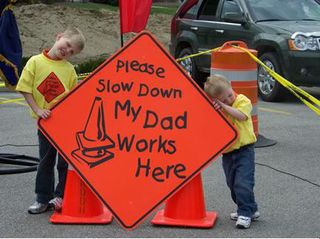Summer travel, which lines up so neatly with utility construction and maintenance season, is just around the corner.
And Joe McElroy, safety director for the Michigan Electric Cooperative Association (MECA), is bracing for the almost daily reports of heart-stopping near-misses as electric equipment operators, lineworkers, groundmen and meter readers tackle projects in the rights-of-way they share with streets, roads and highways.
“It’s one of the biggest concerns I have as a safety provider,” McElroy says. And, protecting lineworkers by training them to do these jobs safely is getting harder. “Distracted drivers, primarily from mobile devices, are making roadway work zones more dangerous. Most any utility worker can tell you about a near-miss event. We are now encouraging work zones to be set up with an unoccupied buffer vehicle parked behind our bucket trucks to help absorb a crash.”
During McElroy’s 10 years at MECA, no co-op crew member has been killed in a traffic incident while on the job, but he recalls many suspected distracted-driver accidents and near-misses. “At safety meetings, operations personnel can usually recall an incident that has occurred within the past few weeks.”
Last spring, McElroy joined utility reps, legislators, union leaders and Transportation Department and Public Service Commission officials, as Gov. Rick Snyder proclaimed May 22 as “Roadside Safety Awareness Day.”
“Roadside safety awareness starts with us letting motorists and pedestrians know they are entering a work zone,” McElroy says. “Orange signs, cones and amber lights should be enough for people to understand they are approaching an active worksite, but even with all the proper safety equipment in place, incidents still happen.”
Roadside accidents annually kill 100 Michigan police officers, firefighters, and line or sanitation workers. Another 20,000 such public servants are injured by vehicles while doing their jobs.
McElroy is also quick to recommend stiffer penalties for these incidents and fatalities, and says a consistent national approach is needed. “And, I have encouraged our co-ops to use local law enforcement to help out in high-traffic areas or where visibility can be an issue. Drivers are accustomed to seeing our signs and cones, so they still speed or become distracted. Once law enforcement is present, they seem to get it.”
Meanwhile, McElroy drills co-op and municipal utility crews how to properly set up a safety perimeter. “Their situational awareness also has to be keen in the work zone, and those of us in the utility safety field have to raise awareness of these dangers.






